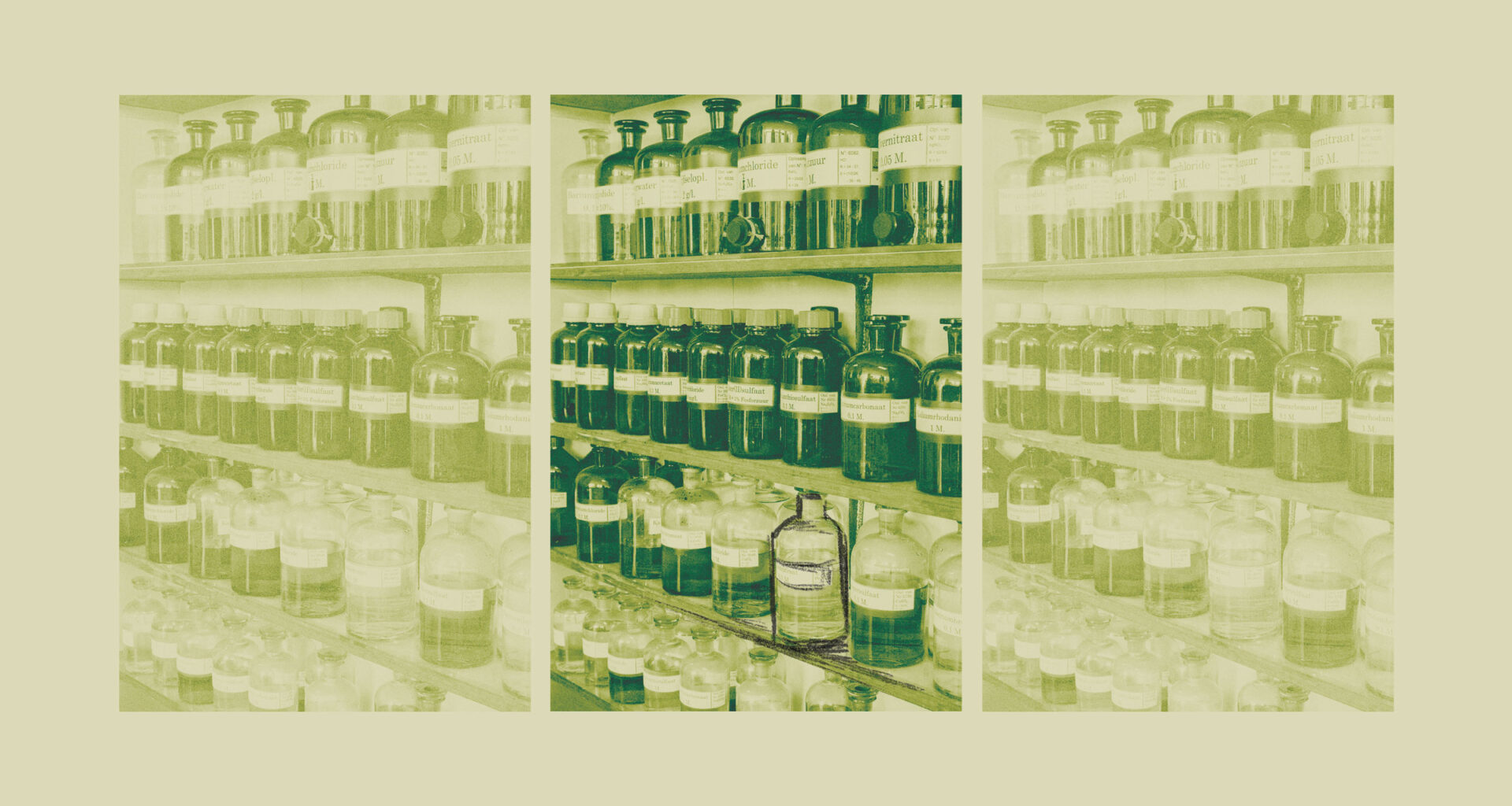Greening Chemistry is a series of opinion columns, written by a rotating group of contributors.
I must admit to being a habitual collector, dare I say even a hoarder. I fear that this behavior is common in chemistry—and not just a problem for those of us who maintain stockpiles of rare compounds, reagents, and substances with potential for an as-yet-undefined use but for our increasingly fragile earth.
The practices of collectors often extend beyond simple accumulation. They reflect complex motivations that range from aesthetic appreciation and intellectual curiosity to the pursuit of social status, investment value, or increased knowledge and understanding.
It’s actually not that far from what many of us do as chemists. We are trained to meticulously cultivate knowledge, ideas, observations, experimental data, and much, much more. As we pass through the formal stages of our education and then into professional practice, we extrapolate our affinity for stockpiling such that every product we make, every reagent we purchase, and indeed every molecule, compound, starting material, or sample we are given or inherit becomes part of a sometimes carefully documented personal collection.
Even if we generally take care of these treasures, we need a reality check. Our chemical storage cupboards can become an eclectic archive of reagent bottles. When we design experiments, we often procure enough reagent to last what amounts to a scientific lifetime. The legacy of this time-honored approach is the nonsustainable growth of huge trove of materials. Some of them don’t see the deck of a fumehood for many years. We often don’t even know if a similar approach is also taking root in the lab next door. Now let’s scale this to a university, city, or region. As a community of responsible, well-trained practitioners of chemistry, collectively we have hoarded an amazing assemblage of materials, molecules, mixtures, complexes, and elements that now pose significant challenges we must recognize and manage.
On a practical level, our respective collections represent a complex mixture of compounds that can be characterized by their associated hazards. Some may be energetic, many will exhibit biological activity, and others may be potent toxins or poisons. The inventories of our labs require management, take up space, and in some cases create nontrivial problems that cost an absolute fortune to solve.
It’s also important to recognize the potential cost that is often overlooked. Each sample is an untapped reservoir of potential; each is typically composed of highly refined materials with complex structure and multiple functionalities. Each material is probably the result of multiple chemicals steps, with associated costs in terms of energy investment and waste generation. We must put these materials to work.
It’s crucial that we view them from a sustainability point of view. I feel ashamed that— although the reactions we do in the flasks today can give rise to new insight,—the cupboards in my lab do not truly reflect the concepts of atomic stewardship. We could evolve philosophically and embrace the concepts of just-in-time synthesis— when smaller quantities of precursors could be ordered and delivered on demand. Imagine if we had just enough material to satisfy the needs of the experimental campaign. Any minimal excess that then could be passed on or disposed of as part of the experimental plan. Unfortunately, if we adopted this alternative way of working, we would be placing trust in a complex supply chain network to ensure that each component was in stock when needed.
“We have hoarded an amazing assemblage of materials, molecules, mixtures, complexes, and elements that now pose a number of significant challenges we must recognize and manage.”
Every lab could then significantly reduce the number of materials that are held in stock, thereby reducing the chemical load in our environment, simplifying laboratory health and safety, and virtually eliminating the challenges associated with maintaining an ever-increasing and aging collection. Suddenly, lab housekeeping tasks are simplified, the working environment improves, clutter is greatly reduced, and coworkers can focus solely on delivering new experiments and knowledge.
Peter Licence wearing glasses, a button-up shirt, and a jacket.
Peter Licence
Credit:
Courtesy of Peter Licence
So as we reflect on our own archives of precious materials and molecules, each of which provides a historical narrative of our own contribution to the creation and refinement of knowledge, perhaps we can all consider how we can awaken our collections and put them to work. Surely by sharing our chemical stocks, as well as our knowledge, we can—to paraphrase a friend—make all matter.
Peter Licence is head of school and director of the GSK Carbon Neutral Laboratories for Sustainable Chemistry at the University of Nottingham.
Views expressed are those of the author and not necessarily those of C&EN or the American Chemical Society.
Chemical & Engineering News
ISSN 0009-2347
Copyright ©
2025 American Chemical Society

